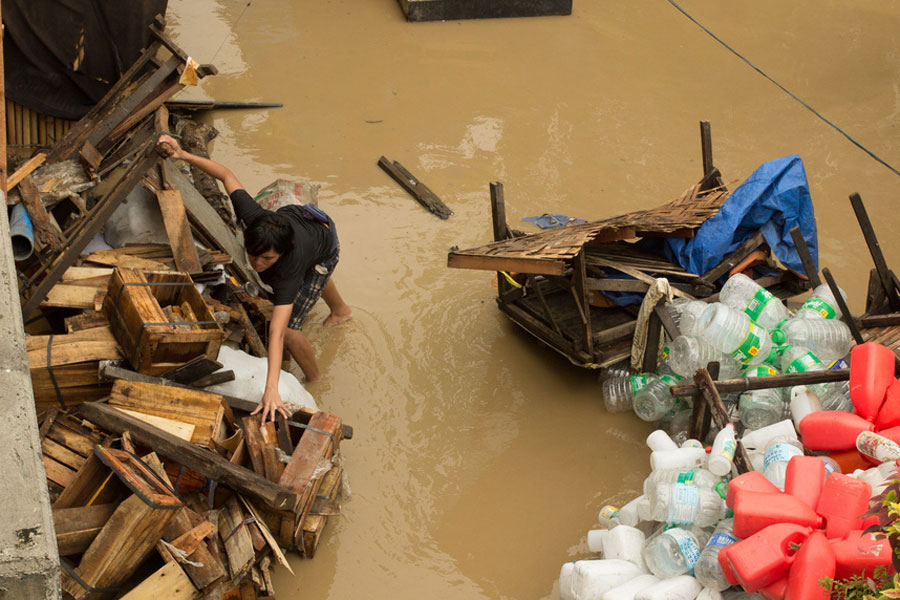DEVELOPMENTS
Microinsurance: Does it Pay Off for the Poor?
Sep 2, 2014
Microinsurance, much like microcredit, seeks to bring financial products and services typically reserved for middle and upper classes to the poor. Its particular promise is to offer low-income consumers protection from financial shocks more effectively than existing coping mechanisms such as credit, savings, pooling of community resources, public sector support, or asset sales.
Over the past two years, The MicroInsurance Centre's MILK project has been studying whether microinsurance lives up to that promise. One tool MILK uses is "client math." We interview low-income people (some with insurance, some without) who have recently suffered through catastrophic events such as flood damage, a death in the family, or some kind of health shock. Through this process, we quantify the cost of the shock and the financial response, exploring the role insurance plays in helping clients recover. Our findings suggest that microinsurance does indeed offer value, albeit to varying degrees and depending on the product, context, and service in question.

MILK's work suggests that funeral and life insurance offers clear value for beneficiaries. At the time of a loved-one's death, poor people are often unable to cover even basic funeral costs. Having insurance enables them to avoid selling assets, using up limited savings, or forgoing essential spending on food, education, or health care. Often, life insurance beneficiaries use their insurance to cover the immediate needs of a deceased client-a wake, a funeral, outstanding debt. In urban Colombia and semi-urban Mexico, for example, getting money to people quickly or offering cashless funeral services as an insurance benefit showed good value.
However, in some rural communities (for example, rural areas in the Philippines or Cambodia), where tradition dictates that the community contribute, MILK's studies suggest that an immediate insurance payout may not offer the greatest value. Instead, a life insurance product designed to support the family over time may be more useful. Timing is important to optimising value and once we understand how communities cope with the financial burden of a death, we can begin to think about microinsurance products that might optimise limited resources during these times.
The MILK Project also studied catastrophic insurance products in three regions (Africa, Asia, and Latin America and the Caribbean), focusing on flood damage to businesses or households. Some products are voluntary, others mandatory, and all sold through microfinance institutions (MFIs). These MFIs were active in designing the products with insurers, which may be why these studies suggest MFIs generally prioritised their own interests (this was the case with all but one institution, Fonkoze in Haiti, where the MFI shared the insurance risk). MILK's client math studies indicate that insured clients were better able to manage financial risks than the uninsured, but the value proposition for the MFI was more compelling than that for the client (for all but Fonkoze). Repaying the outstanding loan to the MFI is often a key benefit of weather-related microinsurance; clients are often left with little or no cash to regenerate their businesses, and thus are limited intheir ability to bounce back from disaster. More client-focused products are needed.
Health insurance is complex in developed and developing countries alike. In poor countries, insuring the poor is even more challenging given the resource constraints that providers face. MILK has looked at various efforts to overcome these constraints through health microinsurance. In India, the project implemented two client math studies analysing hospitalisation insurance (through MicroEnsure in Maharashtra and Grameen Koota in Karnakata) designed to offset expenses associated with diseases such as malaria and gastrointestinal infections. These studies found that insurance offset much of the cost, yet indirect costs were still high (in particular where self-employed workers were forced to miss work). Additionally, clients tended to forego uncovered services because of their high costs, with predictable consequences on health outcomes.
The Milk Project also studied two subsidised programmes that offer an interesting perspective. These programmes cover a broader range of services and reduce overall health care costs substantially. They can also incentivise behavior change in otherwise resistant chronic patients. In Nigeria, for example, we found that insured patients on a subsidised health microinsurance programme have made impressive lifestyle changes such as regular doctor visits, consistent medication, and consumption of healthier diets than the uninsured. It is unclear whether these patients would have signed up for the programme without the subsidy.
MILK's findings suggest that microinsurance shows great promise and in some cases effectiveness in offering value to poor clients. In some cases, however, costs are too high to reach vulnerable segments. In others, costs are low but programme sustainability is tenuous. In others still, products could be better tailored to meet client needs. Finally, many consumers remain skeptical of insurance products, partly because such products have not always responded quickly or effectively to their needs. Microinsurance providers must focus both on their value proposition and its communication to ensure that a broader population benefits from these products.